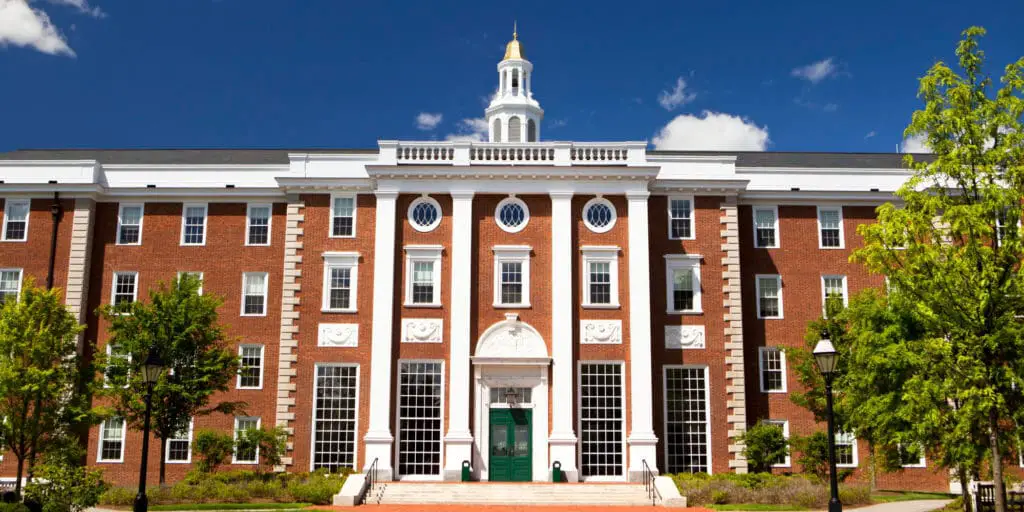The group known as Students for Fair Admissions took Harvard University to trial in a Boston Federal court on October 15 over accusations that the university unfairly rejects Asian-American students based on race.
Harvard University stands at the crossroads of the tumultuous history of Affirmative Action litigation in the U.S. Affirmative Action proves quite controversial, particularly in college admissions and has been challenged numerous times. This time, the challenge comes from the Asian-American group, Students for Fair Admissions (SFA).
On Monday, November 17, 2014, the parent group of SFA, Project on Fair Representation announced the lawsuit against the university for “employing racially and ethnically discriminatory policies” in its admissions practices. The suit was initially spearheaded by Edward Blum – who has a history of representing plaintiffs in cases against Affirmative Action.
When asked for comments on this case, George Mason University admissions remained tight-lipped on the matter. “No comments come out of this office,” one staff member said.
In 1961, President John F. Kennedy coined the term Affirmative Action in executive order 10925. The order requires government contractors “take affirmative action to ensure that applicants are employed and that employees are treated during employment, without regard to their race, creed, color, or national origin.”
President Lyndon B. Johnson reinforced this in 1965 with executive order 11246. Two years later, he signed executive order 11375 further banning employment discrimination by adding sex to the anti-discrimination provisions of his previous executive order.
Challenges to Affirmative Action usually reach the Supreme Court. A few of these cases like Regents of the University of California v. Bakke (1978) and Fisher v. The University of Texas (2013) dealt with Affirmative Action in college admissions.
Allan Bakke, a thirty-five-year-old white man whose academic performance qualified him for admission into the University of California’s Medical School, was rejected twice because the school reserved spots for qualified minorities as a part of its Affirmative Action program.
After hearings in the Supreme Court, it ruled that racial quotas violate the Civil Rights Act of 1964 and Bakke was accepted into the Medical School. The court also ruled race can be used as part of college admissions so long as it was one of many criteria in a candidate’s consideration.
In 1997, Texas legislature enacted a law requiring the University of Texas to admit all high-school seniors who ranked in the top ten of their class. Afterwards, the university revised its race-neutral admission policy and started using race as a factor for all applicants not in the top ten of their senior class.
Years later, Abigail Fisher, a Caucasian female, who did not graduate in the top ten of her high-school class, was rejected from the university. She then sued the school, claiming their consideration of race in admissions violates the equal protection clause of the 14th amendment.
The Supreme Court ruled in favor of the school stating if the policies in question are precisely tailored to serve a compelling government interest then they are constitutional. Diversity in the classroom was considered a compelling government interest in this case.
Preferential treatment based on race is not the only instance of such treatment in college admissions. “Athletes register separately and get in earlier. And what about legacy? If you apply to the same college your father or grandfather went to, then your file gets extra points. People don’t consider these groups when it comes to preferential treatment in college admissions,” said Toni-Michelle Travis, professor of Political Science at George Mason University and former political analyst for C-Span, CNN, and Fox Morning News.
If the Harvard case reaches the Supreme Court – which it has a chance of doing – it could mean the end of Affirmative Action in college admissions.
The resignation of Associate Justice Anthony Kennedy in July and his succession by Brett Kavanaugh pushes the Supreme Court towards conservatism and removes the factor of Kennedy’s typically left-leaning swing-vote.
According to the Martin-Quinn ideology score, the Supreme Court is like a scale with the most liberal justice on the left, the most conservative justice on the right, and the justices in-between running the gradient from liberal, moderate, to conservative. In a case where four liberal justices favor one ruling and four conservative justices favor another, the ninth justice – typically close to being moderate and called the “median justice” – has to cast the decisive vote, known as the swing vote.
Justice Kennedy has a history of casting the swing-vote on high-profile cases. According to a CNN report, he cast the swing-vote in 1992 affirming Roe v. Wade, in 2015 he sided with liberal justices on gay rights, and has voted for and against affirmative action in 2016 and 2007 respectively. Some even referred to the Supreme Court as the “Kennedy Court” because of how his swing-votes gave him control over the court’s rulings.
Without him, the swing-vote falls on Chief Justice John Roberts who is more moderate than other conservative justices, but is more conservative than Justice Kennedy and opposes racial policies. This pulls the “median justice” toward the right and tips the swing-vote power to conservatives.
As for Kavanaugh, in leaked emails from 2001, he expressed concern over Department of Transportation Affirmative Action Policies stating “these DOT regulations use a lot of legalisms and disguises to mask what in reality is a naked racial set-aside.” He may not be in favor of Affirmative Action if it came down to a vote.
The one-two-punch of Justice Kennedy’s resignation and Kavanaugh’s confirmation, coupled with the Trump administration’s rescinding of Obama-era policies encouraging universities towards a diverse student-body, may spell doom for Affirmative Action in college admissions.



